How to Choose the Best Zero Alcohol Red Wine
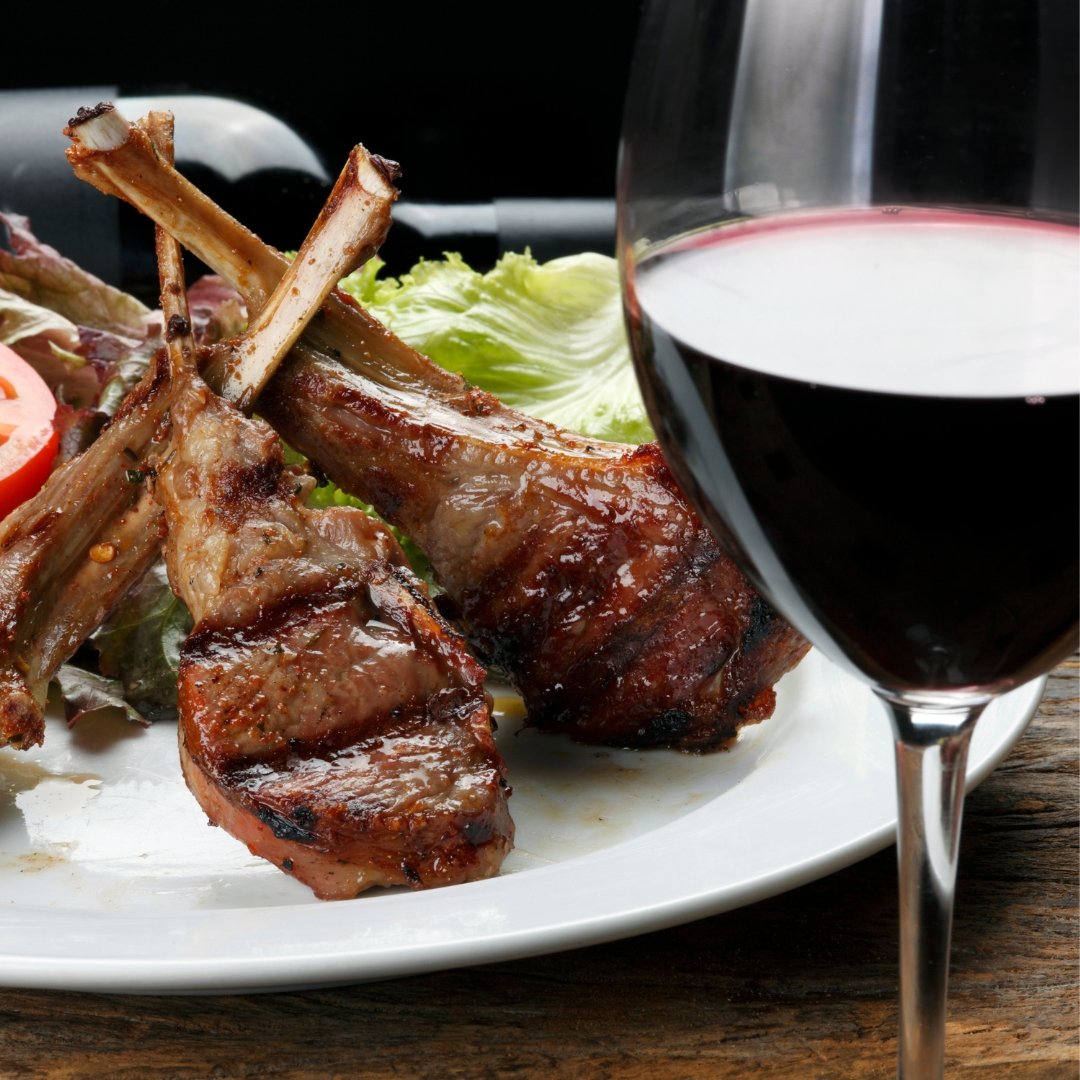
It’s difficult to choose the best zero alcohol red wine if you have yet to taste it. For this reason, there are factors you can consider to help choose wisely. By evaluating certain aspects of the product, you can make a more informed decision in finding a zero alcohol red wine that meets your preferences and expectations.
What Are The Key Takeaways?
Here are the top 10 takeaways from the blog about the carbohydrates in zero alcohol red wine:
- Carbs in Non-Alcoholic Red Wine: Non-alcoholic red wine labeled as zero sugar may still have carbohydrates from residual grape sugars, added ingredients like fruit juices or concentrates, and other naturally occurring compounds.
- Glycerol Contribution: Glycerol, a sugar alcohol naturally present in wine, contributes to the carb content. Although it can cause a blood sugar spike, it is less significant compared to regular sugar. Only half of glycerol carbs are counted as net carbs.
- Polysaccharides: Polysaccharides, complex carbs from grape cell walls, are another source of carbs in non-alcoholic wine. Unlike glycerol, these carbs should be fully counted in net carb intake.
- Dealcoholization Methods: Methods like reverse osmosis or vacuum distillation used to remove alcohol can concentrate the wine’s carbohydrate levels, increasing the non-sugar carb content.
- Source of Carbs: Carbs in non-alcoholic wine can come from glycerol, polysaccharides, or the dealcoholization process itself. If the source isn’t specified on the label, it’s safest to count all carbs.
- Calculating Carbs and Sugar: To maintain a low-carb lifestyle, one should consider the carb and sugar content of non-alcoholic wine and how much they are willing to consume per glass. It’s important to account for all digestible carbs, especially for those on a keto diet.
- Daily Carb Macros: Individuals must consider their daily carb intake limits, which vary per person. For ketosis, strict carbohydrate restriction is required, typically under 50 grams per day.
- Consuming Food with Wine: Pairing non-alcoholic wine with protein and healthy fats can slow carb absorption, prevent blood sugar spikes, and increase satiety.
- Impact of Physical Activity: The body’s carb utilization depends on the type and duration of physical activity. Endurance activities require more carbs, while lower intensity efforts can utilize more protein and fat.
- Other Considerations:
- Wine Style: Focusing on wine style rather than specific grape varieties can help discover enjoyable options.
- Wine Weight: Zero alcohol red wine typically ranges from light to medium-bodied due to the absence of alcohol.
- Health Benefits: Non-alcoholic red wine offers health benefits like lower calories, carbs, and antioxidants without the negative effects of alcohol.
What Are the Carbs in Zero Alcohol Red Wine?

Even if a non-alcoholic red wine is labeled as containing zero sugar, it may still possess carbohydrates from other sources. Residual, unfermented grape sugars and carbs can remain after the dealcoholization process. Some non-alcoholic wines may have other ingredients like fruit juices or concentrates added that contribute carbs but not necessarily sugar.
The non-sugar carbohydrate compound called glycerol, for example, is naturally present in wine and sometimes added for texture. It is a carb. Glycerol is a sugar alcohol. This sugar alcohol can still cause a blood sugar spike, just not as significant as sugar. If a wine contains 10 grams of carbohydrates from the glycerol, and you know the carbs comes from only glycerol, count this as 5 net carbs toward your daily macros. In other words, your body will register about half of these carbs.
Additionally, polysaccharides, which are long-chain carbohydrate molecules from grape cell walls, can contribute to the carb content without adding sugar. While polysaccharides are not simple sugars, they are still digestible and should be counted as part of your net carb intake. Unlike sugar alcohols like glycerol, polysaccharides do not have a reduced impact on blood sugar and should be fully counted.
Furthermore, certain dealcoholization methods such as reverse osmosis or vacuum distillation can concentrate the wine’s carbohydrate levels while removing alcohol, potentially increasing the non-sugar carb content. So while labeled as zero sugar, the carb content in zero alcohol red wine likely comes from these residual carbs, added ingredients, naturally occurring wine compounds, or changes from the dealcoholization process itself concentrating the non-sugar carb sources.
What Is The Source Of The Carbs?
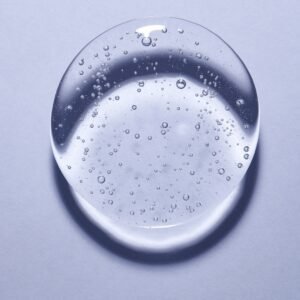
When the nutritional label on a bottle of non-alcoholic wine shows zero sugar but higher carbs (i.e. 10 grams of carbs), it can be challenging to determine the exact source of those carbs. They could derive from glycerol (a sugar alcohol), polysaccharides (complex carbs from grapes and yeast) or from the dealcoholization process itself.
Since the label does not specify the source, the most conservative approach is to count the full 10 grams of carbs towards your daily carb macros. This ensures you account for all digestible carbs that could potentially impact your ketosis or low-carb lifestyle.
I’ve noticed that many zero alcohol red wines contain 8 carbs with 5 of these being sugar per serving. Serving sizes differ. This means the wine has 1.26 carbs per ounce. I can enjoy a 4 ounce glass of wine with 5.04 carbs.
How Do You Calculate The Carbs and Sugar?

In order to find the best zero alcohol red wine for your Keto diet or low-carb lifestyle, you will want to consider the product’s carb and sugar content and the amount of grams you are willing to consume per glass.
Zero alcohol red wine can range from zero to 20 or more grams of sugar and carbs per serving. What is the carb and sugar limits per serving you are willing to drink?
In maintaining a low-carb lifestyle at the age of 62, I consume no more than 25 to 30 grams of net carbs per day.
For me, in choosing a zero alcohol red wine I will not consume more than 1.5 grams of carbs per 6 ounce glass of wine. I just don’t want to spend a significant portion of my daily carb macros on one glass of wine.
To our benefit there are zero alcohol red wines with low carbs and low sugar. So what’s your limit? Your wine carb limit will depend on your daily carb macros, whether you’re consuming food with the wine, and your activity level.
Considering Your Daily Carb Macros:
Ketosis:
Carbohydrates from sugars, glycerol, and polysaccharides can significantly impact your ketosis. Consuming too many carbs, particularly from sugars like glucose, fructose, and sucrose, can quickly disrupt ketosis by raising blood sugar levels and stimulating insulin release, which inhibits ketone production. Every person’s limit is different. Personally I have a low threshold for carb intake when moving into and maintaining ketosis. If I consume more than 10 net carbs per day I will not go into ketosis. My husband has hit own limit different than my own. So, your limit will be unique.
Glycerol, a byproduct of fat breakdown, can be used for gluconeogenesis to produce small amounts of glucose, but its impact on ketosis is minimal compared to dietary carbohydrates
Polysaccharides, such as starch and glycogen, are broken down into glucose, significantly raising blood sugar and insulin levels, thus inhibiting ketogenesis. Therefore, maintaining ketosis requires strict carbohydrate restriction, typically under 50 grams per day, to ensure the body continues to produce and utilize ketones for energy.
Low-Carb Lifestyle:
While both ketogenic and low-carb lifestyles involve carbohydrate restriction, there are differences in how sugars, glycerol, and polysaccharides affect each state. For ketosis, a deeper level of carb restriction is required to ensure the body remains in a fat-burning metabolic state, producing ketones for energy. Consuming even small amounts of sugars or polysaccharides can rapidly spike insulin and glucose levels, inhibiting ketogenesis and kicking the body out of ketosis.
Glycerol has a negligible impact due to its limited gluconeogenic potential. On a low-carb diet, while carbs are still restricted, there is more flexibility to consume moderate amounts of polysaccharides and sugars without disrupting the general fat-burning state. However, higher intakes of these carb sources can still elevate insulin, impeding fat loss. Glycerol remains relatively inconsequential for both states.
Therefore, for optimal ketosis, strict avoidance of sugars and polysaccharides is crucial, whereas a low-carb approach allows some flexibility, as long as carb intake remains low enough to promote fat metabolism over glucose utilization.
Consuming Food with Wine:
It’s also important to consider whether you consume protein and healthy fat with your glass of zero alcohol red wine that contains carbs and sugar. Protein and fats help slow the absorption of the wine’s carbs into the bloodstream, preventing blood sugar spikes and crashes. They also increase feelings of fullness and satiety. By incorporating protein and healthy fats when consuming zero alcohol red wine, the carbs can be better balanced and moderated as part of an overall balanced diet.
Activity Level:
The duration, intensity, and type of physical activity all play a role in how quickly the body utilizes carbohydrates and sugars for fuel. During short bouts of activity under 90 minutes, the body relies primarily on stored muscle glycogen and blood glucose. However, for longer endurance efforts over 90 minutes, the body depletes these glycogen stores and must ingest additional carbohydrates during exercise to maintain performance. Higher intensity activities like intense weightlifting or sprinting burn through carb stores more rapidly compared to lower intensity efforts like walking.
Endurance sports like running and cycling have a higher carbohydrate demand than resistance training since the body can utilize more protein and fat during weightlifting. That said, ingesting carbs before and after resistance sessions helps replenish depleted glycogen to aid recovery. So while endurance training at higher intensities for longer durations necessitates higher carb intake, the type of activity also influences how quickly the body burns through its carb stores.
What Are Other Factors To Consider?

Wine Style:
In my opinion, focusing on wine style rather than a specific grape variety can broaden your horizons and help you discover many enjoyable wines. People often make statements like, “I only like Chardonnay.” This can be an indecisive stance. This is a blog about zero alcohol red wine, but I’m using Chardonnay as an example. Chardonnay grapes are grown worldwide in diverse climates, from warm regions like South Africa to cool areas like Oregon or Niagara, Ontario.
The region and microclimate significantly influence the wine’s style. Additionally, winemaking techniques such as malolactic fermentation and oak aging can dramatically alter a Chardonnay’s taste and flavor profile. A barrel-fermented, oak-aged Chardonnay will exhibit characteristics entirely different from one fermented solely in stainless steel.
The type of oak and level of toasting of the barrel further shape the wine’s character. So, simply stating a preference for Chardonnay is too broad. If one understands the specific style they enjoy, such as a light, crisp, and clean Chardonnay without oak influence, it opens up a world of possibilities. They may also appreciate other crisp, unoaked white wines like Sauvignon Blanc, dry Riesling, or Pinot Grigio. By focusing on the desired wine style rather than the grape variety, you can broaden your spectrum and discover many enjoyable options.
In the context of zero alcohol red wine, what styles do you prefer? Non alcoholic red wine can be light and fruity (Pinot Noir), smooth and fruit forward (Merlot) or austere (forward tannings and astringency in varieties like Cabernet Sauvignon).
If you enjoy light, fruity non alcoholic red wines, such as Pinot Noir, you’ll no doubt enjoy others vinified in this same style. Examples include dry rose, dry rose sparkling wine, and Gamay.
ONES Sparkling Rose:
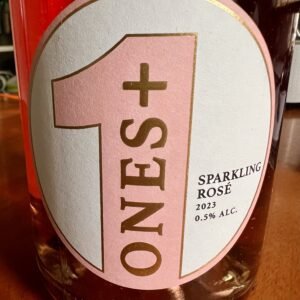
I love ONES Sparkling Rose. It possesses zero carbs and zero sugar. It’s light and fruity with clean acidity that cleans the palate, all the while hydrating the body.
Click this link to receive your 10% discount on all ONES wines:
https://www.drinkones.com/SHARI60891
The Weight Of The Wine:
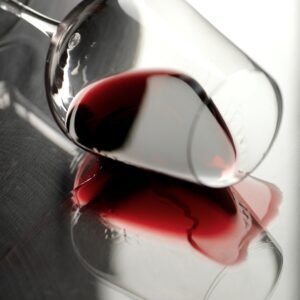
Generally, zero alcohol red wine will range from light to medium-bodied. I have yet to discover a full-bodied, non alcoholic red wine. Why?
In knowing this, the question then arises, ‘Do you need a full-bodied, zero alcohol red wine to pair with fatty foods?
A New Mindset For Health and Success:
Your desire for a full-bodied red wine is really just a state of mind. With a keto or low-carb lifestyle, we say goodbye to certain indulgences like traditional wheat bread. However, this doesn’t mean depriving ourselves completely. We embrace keto-friendly bread alternatives, understanding that while they may not taste exactly like wheat bread, they offer a satisfying and healthier option.
The same applies to choosing non-alcoholic over traditional wine. We can acknowledge that non-alcoholic red wine may not have the same body or viscosity as traditional alcoholic reds. But our dedication to well-being is more important than the fleeting pleasure of indulging in a full-bodied, alcoholic red.
It’s a trade-off where we prioritize our long-term health over momentary cravings or desires. This new mindset allows us to be successful and committed to our weight loss or weight management plan while still enjoying the pleasures of red wine, just without the alcohol. Simply put, what’s more important? Your health or a glass of full-bodied alcoholic red? Choose.
The Weight of the Wine and Fat in Food:
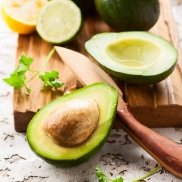
Classic food and wine pairing principles state that we need a full-bodied red wine to harmonize with fatty foods. This is so the wine’s viscosity will match the weight of the dish. A big, full-bodied red works with beef high in saturated fat. But there is another perspective to consider.
We now know it’s important to focus more on Keto dishes celebrating healthy fats. Unsaturated fats, found in foods like olive oil, avocados, nuts, and fatty fish, are generally considered healthier for the heart and cardiovascular system. Multiple studies have shown that replacing saturated fats with unsaturated fats can help reduce the risk of heart disease, a significant concern as it is the leading cause of death in the USA and the second leading cause in Canada.
Zero alcohol red wine with medium-body will harmonize perfectly well with Keto-friendly foods celebrating healthy fats.
What Grape Varieties Are Used In Zero Alcohol Red Wine?

The most popular grape varieties used to produce non-alcoholic red wines around the world are:
- Cabernet Sauvignon: This classic red grape variety is widely used to make non-alcoholic Cabernet Sauvignon wines, especially in regions like California and France. It provides bold flavors of black currant, cherry, and sometimes notes of oak.
- Merlot: Another popular choice, Merlot grapes lend softer tannins and flavors of plum, blackberry, and mocha to non-alcoholic red wines.
- Tempranilo: This Spanish grape is used to craft non-alcoholic Tempranillo wines with flavors of red fruits, spice, and persistent tannins.
- Garnacha (Grenache): Garnacha/Grenache grapes are used to produce earthy, medium-bodied non-alcoholic red wines with notes of red berries and spice.
- Syrah: Some non-alcoholic red wines are made from the Syrah grape variety, offering flavors of ripe berries, black pepper, and hints of oak.
- Pinot Noir: While less common, Pinot Noir grapes are sometimes used to make lighter-bodied, fruit-forward non-alcoholic red wines.
- Red Blends: Many non-alcoholic red wines are crafted from blends of grape varieties like Cabernet Sauvignon, Merlot, Syrah, Zinfandel, and others to create complex, full-bodied flavors.
- Other grape varieties: Other grapes like Zinfandel, Mencia, and regional Italian/Spanish varieties are also occasionally used, but Cabernet Sauvignon, Merlot, Tempranillo, and Garnacha tend to be the most prevalent choices for producing high-quality non-alcoholic red wines globally.
What Are Some Low Sugar Zero Alcohol Red Wines You Can Try?
- YOURS Non-Alcoholic California Red Blend: 6.8 calories and 0.68g sugar per 100mL
- Sovi Reserve Red: 10 calories and 1.3g sugar per 100mL
- Joyus Cabernet Sauvignon: 16.7 calories and 1.3g sugar per 100mL
- Alcohol Removed Cabernet Sauvignon: 13.3 calories and 1.3g sugar per 100mL
- Edenvale Non-Alcoholic Grenach Shiraz Mataro: 10 calories and 1.8g sugar per 100mL
- Naughty Red: 14 calories and 2.5g sugar per 100mL
- Lautus Non-Alcoholic Red: 12 calories and 3g sugar per 100mL
- Edenvale Non-Alcoholic Tempranillo Cabernet Sauvignon: 14 calories and 3g sugar per 100mL
- Luminara Red Blend: 20 calories and 3.2g sugar per 100mL
- Edenvale Shiraz: 17 calories and 3.8g sugar per 100mL
- Edenvale Cabernet Sauvignon: 18 calories and 3.9g sugar per 100mL
- Edenvale Premium Reserve Pinot Noir: 20 calories and 4.3g sugar per 100mL
- Leitz Eins-Zwei-Zero Pinot Noir: 21 calories and 4.9g sugar per 100mL
What Keto/Low-Carb Dishes Complement Zero Alcohol Red Wine?

Light, Fruity Reds:
Zucchini Tapas (Heart Healthy)
Smoked Salmon Rolls (Heart Healthy)
Medium-Bodied Reds:
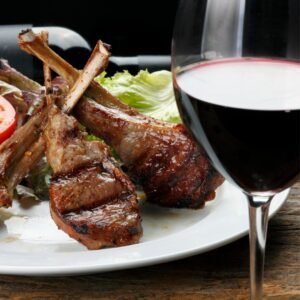
Keto Low-Carb Meat Lover’s Pizza (Heart Healthy)
What Are The Health Benefits of Zero Alcohol Red Wine?

Drinking zero alcohol red wine offers numerous health benefits without the negative effects of alcohol consumption. It can lower blood pressure by increasing nitric oxide levels and eliminate the risk of hangovers since it contains no alcohol. Non-alcoholic red wine is also lower in calories and carbs compared to regular wine, making it a better choice for weight management. Zero alcohol red wine also contains antioxidants.
Antioxidants Found in Zero Alcohol Red Wines
Antioxidants are compounds that help protect the body against oxidative stress and damage caused by free radicals. They play a crucial role in maintaining overall health and well-being. Interestingly, zero alcohol red wine also contains antioxidants, just like their alcoholic counterparts. One of the key antioxidants found in red wine, including alcohol-free versions, is resveratrol.
Resveratrol is known for its potential health benefits, such as reducing inflammation. Resveratrol also helps to improve cardiovascular health, helping to reduce the risk of heart disease and certain cancers. It aids in regulating blood sugar levels for type 2 diabetics, and contributes to better cognitive function and reduced risk of neurodegenerative disorders.
In addition to resveratrol, zero alcohol red wine is also rich in other antioxidants like polyphenols and flavonoids. These antioxidants help combat cell damage, reduce inflammation, and may even lower the risk of chronic diseases. By choosing zero alcohol red wine packed with antioxidants, you can still enjoy the health benefits associated with traditional red wines without the alcohol content.
| Antioxidant | Function |
|---|---|
| Resveratrol | Reduces inflammation and supports heart health |
| Polyphenols | Combat cell damage and reduce inflammation |
| Flavonoids | May lower the risk of chronic diseases |
What Is The Serving Temperatures for Zero Alcohol Red Wine?
When it comes to serving zero alcohol red wines, temperature plays a crucial role in enhancing the overall tasting experience. Ideally, these wines should be served slightly chilled rather than at room temperature. Aim for a temperature range between 55-65°F (12-18°C). This slight chill helps to uplift the flavors and aromas of the wine while ensuring a refreshing and enjoyable drinking experience.
It’s important to note that serving temperatures can vary depending on personal preference and the specific characteristics of the red wine in question. Some lighter-bodied zero alcohol red wines (Pinot Noir) might benefit from a slightly cooler temperature to highlight their delicate nuances, while medium-bodied varieties might be best enjoyed closer to the higher end of the recommended range for a more rounded flavor profile. Experimenting with different serving temperatures can help you discover the ideal drinking temperature that suits your palate and brings out the best in the zero alcohol red wine you’re tasting.
- For optimal taste, serve zero alcohol red wines slightly chilled between 55-65°F (12-18°C)
- Lighter-bodied red wines may benefit from a cooler temperature to highlight delicate nuances. Chill for a half hour in the refrigerator.
- Medium-bodied red wines can be enjoyed closer to the upper end of the temperature range for a more rounded flavor
- Experiment with different serving temperatures to find the ideal drinking temperature for your palate
- Chilling the wine slightly can enhance flavors and aromas for a refreshing experience
Can You Cellar Zero Alcohol Red Wine?
When it comes to zero alcohol red wines, cellaring them can be a bit different compared to traditional wines due to the absence of alcohol as a natural preservative. While most zero alcohol red wines are best consumed fresh to enjoy their vibrant flavors, there are some varieties that can benefit from short-term aging. If you have a zero alcohol red wine that you think might improve with some time, consider storing it in a cool, dark place away from direct sunlight and vibrations. For those looking to cellar zero alcohol red wines for a year or two, it’s best to opt for varieties with higher acidity levels and robust tannins, as these characteristics may help the wine maintain its structure over time.
Keep in mind that not all zero alcohol red wines are suitable for aging. So it’s essential to check the producer’s recommendations before deciding to cellar a bottle. Additionally, make sure to store the wine horizontally if it has a cork closure to keep the cork moist and prevent premature oxidation. Overall, while zero alcohol red wines may not have the same aging potential as their alcoholic counterparts.
- UNUSUAL KETO INSTANT POT RECIPES FOR 2025 - April 27, 2025
- Boost Your Keto Diet with These Non-Alcoholic Wine Hacks - April 27, 2025
- 10 Unique & Healthy Mocktails You Need to Try - April 27, 2025


